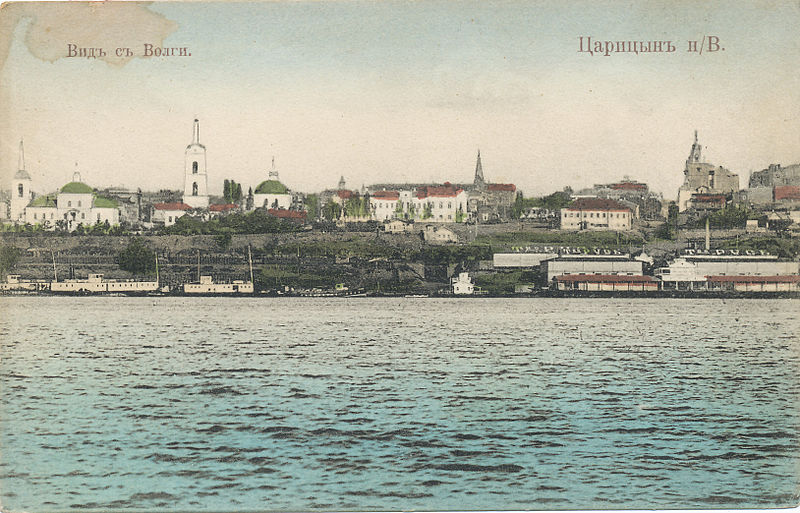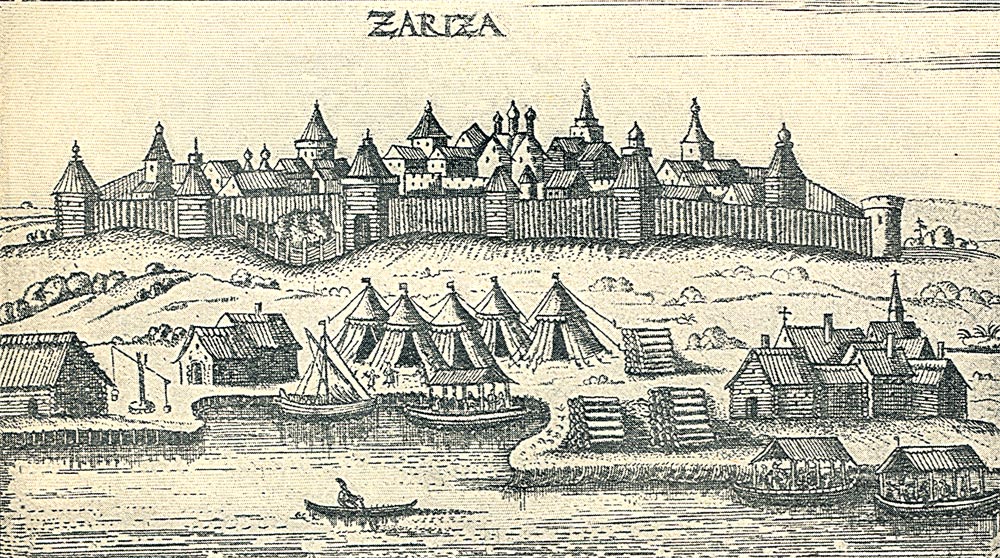History of Volgograd
16th Century
Foundation
The modern day city of Volgograd is said to have been founded in 1589 as a fortress named Tsaritsyn on the River Volga in territory which had been annexed to Russia with the defeat of the Astrakhan Khanate. The name derives from the River Tsaritsa which has Turkic origins and is not related to the Russian word ‘tsar’. Previous to this it is believed that there was a Tatar settlement located here.
17th Century
Border Town
Tsaritsyn quickly grew into an important border town with a garrison of troops and customs officials. Being located on the border of Russia the city was often subjected to enemy raids from Crimean Tatars, the nomadic Kalmyks and Kazakhs and even the Cossacks before they were bought under Russian control. During the uprising led by Stepan Razin in 1670 the city joined the rebellion.
18th Century
Tsaritsyn Fortified Line
During the 18th century Tsaritsyn continued to suffer at the hands of nomads, the worse of which occurred in 1717 in what has become known as the Kuban Pogrom. As a result of the raids, Peter the Great ordered the construction of the Tsaritsyn Fortified Line consisting of earthen mounds running from Tsaritsyn to the River Don. The defences were built between 1718 and 1725, but it was during the reign of Empress Anna that they were put to most use as Russians settled into the territories protected by them. As such the defensive line was often called Anna Ioanovna's Mound. Empress Anna was also responsible for establishing the Volga Cossack Host in 1734 which was based just north of Tsaritsyn.
German Settlement around the Volga
During her reign, German-born Empress Catherine the Great encouraged emigration to the region of German specialists who would bring skills needed to aid the industrial and agricultural development of the Volga region. The Germans who came set up their own settlements around Tsaritsyn, most famously in Sarepta on the outskirts of the city in 1765. These Germans later became known as Volga Germans.
Pugachev Rebellion
In 1774 the Volga Cossacks supported the rebellion of Yemelyan Pugachev and together they marched on Tsaritsyn. However it was in Tsaritsyn that the rebellion began to falter as government troops inflicted a crushing defeat on the rebels. For supporting Pugachev the Volga Cossack Host was dissolved in 1777 on the orders of Empress Catherine the Great. In 1780 Tsaritsyn became the centre of the Tsaritsyn District of the Saratov Viceroyalty.
19th Century
Industrial Development

At the end of the 18th century, after the Volga Cossack Host was dissolved and the Tsaritsyn Fortified Line had become obsolete, the defensive role of Tsaritsyn decreased and the city's industrial importance grew. This trend continued throughout the 19th century which was aided in the 1860s and 1870s with the arrival of railway lines in Tsaritsyn, improving the transport links and bringing new industries to Tsaritsyn.
20th Century
Defence of Tsaritsyn
During the Russian Civil War Tsaritsyn was seen as a strategic city due to its industry and port and the Reds and the Whites fought for its control. The battle and defence of Tsaritsyn became a significant episode of the war. The Whites, led by Ataman Pyotr Krasnov, launched their campaign to capture the city from the Bolsheviks in the autumn of 1918. According to the traditional Soviet version of events, the local Bolshevik leader - a certain Joseph Stalin - disobeyed orders from Moscow and brought in reinforcements from the Caucasus which were able to hold the city. The Whites, this time led by Pyotr Wrangel, were able to capture the city in May 1919, but by August 1919 the city was once again in the hands of the Reds and the Whites, substantially weakened, had begun their flight to Crimea.
Once under firm Bolshevik control the city became the centre of the newly established Tsaritsyn Governorate in 1919. In 1925 it was decided to rename the city Stalingrad in recognition of the role Joseph Stalin played in the defence of the city during the Civil War.
Battle of Stalingrad
The strategic significance of the city was once again demonstrated during the Second World War as Nazi Germany hoped to capture the city and completely cut off the USSR from the oilfields of the Caucasus. The Nazis began the offensive in late summer 1942 and managed to capture most of the city but then had to fight for each building which the Soviets heroically and stubbornly defended. In November 1942 the Red Army launched its counter-offensive, codenamed Operation Uranus (Uran), which managed to encircle the German 6th Army. The 6th Army was ordered to hold the city while supplies were airlifted in. By February 1943 the last German aerodrome had been captured by the Soviets and the 6th Army quickly completely ran out of supplies and ammunition. When General Friedrich Paulus was captured he had no alternative but to surrender the German 6th Army. On the same day Hitler promoted Paulus to general field marshal, seen as a hint that he should commit suicide as no general field marshal had previously ever been captured alive.

The Battle of Stalingrad was a major battle of the war (perhaps even the major battle of the war) and is credited with being the bloodiest battle in the whole history of warfare. It is also seen as the breaking point of the Wehrmacht, which lost its initiative on the Eastern Front and the belief that it was invincible, and a turning point of the European war as Hitler was forced to retreat for the first time. However this victory came at an enormous loss of human life (estimates are put at around 2 million people perishing - including Germans and Soviets, soldiers and civilians) and the city was virtually destroyed.
Rebuilding and Renaming the City

After the war Stalingrad was rebuilt as a model Soviet city and numerous memorials were erected, most famously the spectacular Mother Russia Calls Monument on the city's Mamaev Kurgan hill, which was completed in 1967. The city's industry was also rebuilt and enhanced with the construction of the Volga-Don Canal in 1952 and the Volzhskaya Hydro-Electric Dam in 1961. In 1961, as part of the programme of de-Stalinisation, it was decided to rename the city Volgograd.


 History
History